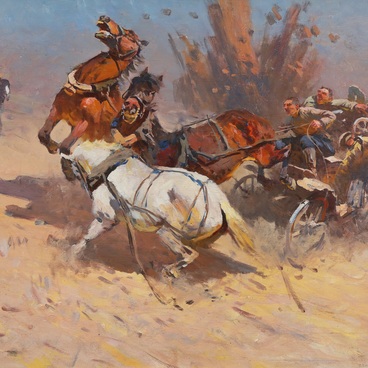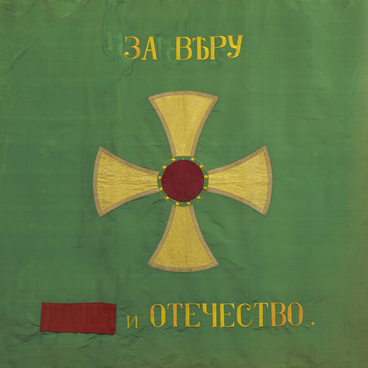The exposition has a poster depicting three branches of state power of the Russian Federation, namely legislative, executive and juridical, their competencies and interaction.
The President of the Russian Federation, the head of the state and guarantor of the constitution, is depicted in the center of the scheme.
In Russia legislative power is represented by the Federation Council and the State Duma. The Federation Council consists of representatives of subjects of the RF, namely two representatives of each subject, and several members appointed by the President. The Federation Council represents regions at the federal level and it cannot be dissolved by the President.
The State Duma adopts federal laws and resolutions to be considered later by the Federation Council. Every five years its members are elected by citizens of Russia. In the State Duma the power to initiate legislation belongs to the President, members of the Federation Council, deputies of the State Duma, the Government, legislative bodies of subjects of Russia, the Constitutional Court and the Supreme Court of the Russian Federation.
In our country the Government exercises executive power. The Government consists of Prime Minister, deputies and federal ministers. The Government establishes the budget, carries out the single policy in economic, cultural, and social areas, manages federal ownership, provides for national security and protects rights and freedoms of citizens.
Federal courts and courts of subjects of Russia exercise juridical power, particularly the Constitutional Court and the Supreme Court.
The Constitutional Court handles disputes between bodies of state power, complaints on violation of rights and freedoms of citizens, cases contesting the constitutionality of laws.
The Supreme Court is the highest judicial authority of Russia for civil, criminal, administrative cases and economic disputes. The Supreme Court also handles cases contesting various legal acts as a court of the first instance.
The principle of separation of powers provides bodies of state power with mutual relations that enable them to constrain and control each other without concentrating power in one person or agency.
Thus, the principle of separation of powers prevents the development of authoritarian and totalitarian tendencies in a state, ensures freedom in the society, protection of rights and freedoms of a person and a citizen.
The President of the Russian Federation, the head of the state and guarantor of the constitution, is depicted in the center of the scheme.
In Russia legislative power is represented by the Federation Council and the State Duma. The Federation Council consists of representatives of subjects of the RF, namely two representatives of each subject, and several members appointed by the President. The Federation Council represents regions at the federal level and it cannot be dissolved by the President.
The State Duma adopts federal laws and resolutions to be considered later by the Federation Council. Every five years its members are elected by citizens of Russia. In the State Duma the power to initiate legislation belongs to the President, members of the Federation Council, deputies of the State Duma, the Government, legislative bodies of subjects of Russia, the Constitutional Court and the Supreme Court of the Russian Federation.
In our country the Government exercises executive power. The Government consists of Prime Minister, deputies and federal ministers. The Government establishes the budget, carries out the single policy in economic, cultural, and social areas, manages federal ownership, provides for national security and protects rights and freedoms of citizens.
Federal courts and courts of subjects of Russia exercise juridical power, particularly the Constitutional Court and the Supreme Court.
The Constitutional Court handles disputes between bodies of state power, complaints on violation of rights and freedoms of citizens, cases contesting the constitutionality of laws.
The Supreme Court is the highest judicial authority of Russia for civil, criminal, administrative cases and economic disputes. The Supreme Court also handles cases contesting various legal acts as a court of the first instance.
The principle of separation of powers provides bodies of state power with mutual relations that enable them to constrain and control each other without concentrating power in one person or agency.
Thus, the principle of separation of powers prevents the development of authoritarian and totalitarian tendencies in a state, ensures freedom in the society, protection of rights and freedoms of a person and a citizen.

